
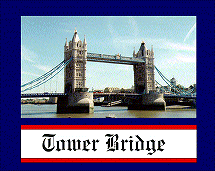
Being of Irish descent and having arrived in London after going to Ireland first and learning a little bit about the legacy of English dominance in my ancestor's home and the centuries long fight for freedom, I was naturally prejudiced against the capital of Great Britain and what I have to say about it should be read in this light. To me, London looks as if it is a decaying society, from the over sensationalized headlines of the papers to tourist postcards revealing dirty fingernails and the Underground subway system.
I first noticed this after getting off the Eurostar Chunnel train and entering the Underground at Victoria Station in route to a place to stay the night before continuing on to Ireland. My first impression was that the city looked old. Not like the patina of age of other European cities, but new old indicative of decay. As I looked out the window of an upper level of Victoria Station I saw old looking English taxi cabs. Several men in poorly cut pinstriped suits that had gone out of style in the U.S. a decade or two ago shared the subway car on the Underground we were in. I saw a well dressed business woman on another train who looked like a construction worker in disguise after I noticed her hand gripping a pole. The fingernails of this well dressed and made up woman were dirty and unkept. The subway system itself, which seemed to run efficiently enough on first look, looked far more decrepit than the subway in Prague. The too confined feeling of the subway trains, the dangling-penis handles for standing passengers (right out of a Buck Rogers episode), and the mechanical voice that repeats the warning "mind the gap" several times as the train slows to a stop at a station really reminded me of reading George Orwell's 1984, and I began to wonder if the Underground might have been an inspiration for him.
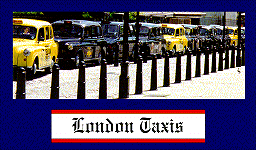
As we were leaving London, I saw a businessman on the Underground, dressed in a pinstriped suit no less, with nose hairs descending straight down from the opening of his nostrils while others grew as if trees bending towards the sun that lay a foot or so in front of his feet. These nose hairs might have been concealed by a man's mustache, but it looked as he wasn't capable of growing a mustache despite the fact that his hair was graying. The hair on his face was sparse like that of a pubescent boy eagerly awaiting the day when the few hairs on his face would multiply and merit his first shave.
Karen and I agreed that the worse dressed people we had ever seen were those in London. We can't exactly pin-point why we believe so other than to say that the common Londoner appeared to make a concerted effort not to look ascetically pleasing. It's as if you've all but run out of clean clothes and not only have to wear your least favorite clothes, but have to wear clothes that don't compliment each other either. If you can imagine, this would extend to hair styles too. Of course the guards at Buckingham Palace and even the mounted police officers (men and women) who were there for crowd control were the exception to the rule.

London was the first place I had been to other than Tokyo where cards were plastered around the phone of a public telephone booth soliciting sex. There were a couple of differences in the London version though that extended beyond the fact that the English advertisements were a little cheaper than those found in Tokyo. The London advertisements were up every day of the week, while the Tokyo advertisements were only thick on Fridays and Saturdays. I couldn't read the Tokyo ads (though I had them translated later-see Japan section), but even the drawings of the cards in London had a peculiar bent to them. The photos of women in Tokyo ads were more simple, but captions were possibly milder than the ones in London which had phrases like "YOUR PLACE IS AT MY FEET! RUBBER LEATHER DOMINATION," "Your Pleasure...My Pain...When You Give Me The Cane...," and "SCHOOLGIRL FANTASIES TOTALLY SUBMISSIVE 18 YRS OLD."
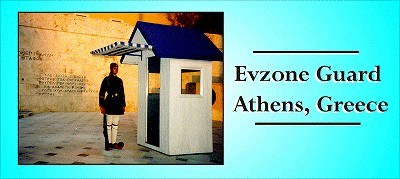
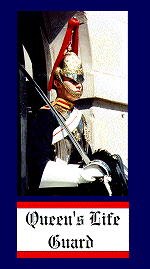
After seeing the royal guards in Greece, the Queen's Life Guards were a disappointment. The guards in London lacked the discipline and precision of their counterparts in Athens. We even noticed that a guard who was on foot was wearing stained pants.
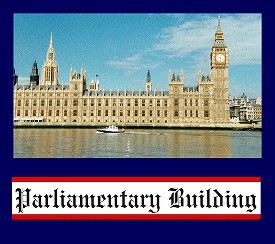
My impressions of London were not all negative though, far from it. The theater district of London reminded me of Broadway and the smaller version in San Francisco, though it was more beautiful from the outside than either of these two American locations. The memorials throughout the city to the Imperial Age of Britannia impressed upon me the vigor of an age passed that has few comparisons. Westminster Abbey, with its numerous statues, crypts and monuments, is the most spectacular monument to the political and cultural achievements of a country that I have seen throughout Europe. The view of the parliamentary buildings and the Clock Tower, which houses Big Ben, from across the Thames rivals any of the major sites in Europe. The Imperial War Museum dealt with the World Wars in both an interesting and educational way that I have yet to see anywhere else. The British Museum with its Elgin Marbles, the Rosetta Stone, and display of Egyptian mummies has reserved a place for its own in the museums of the world (having said this I must add that the impact of the Elgin Marbles is severely diminished out of their context of the Parthenon, and should be returned to their rightful place at the Acropolis complex in Athens).
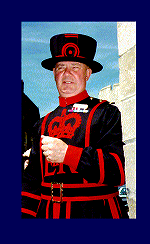
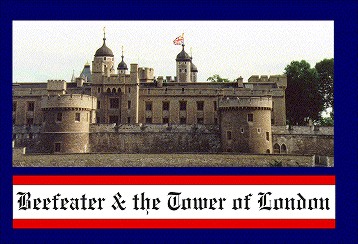
The Tower of London is impressive to some because it houses the crown jewels, to me because so much history has occurred within its walls. It was a prison, a home for royalty at the same time, and housed both England's mint and an unmarked graveyard for some 1500 people. Where else can you see graffiti carved into walls dating from the sixteenth and seventeenth centuries? The original Tower of London is the innermost structure known as the White Tower which was started by the Norman invader, William I, in 1078 (twelve years after the Battle of Hastings). Henry VIII had some of his wives beheaded there, Elizabeth I was jailed there, and so was Thomas Moore. Sometime in the intervening centuries, royalty has moved out to Buckingham Palace, coins are no longer minted there, and prisoners now have more comfortable homes, but it still houses the crown jewels and the illustrious Beefeater guards, all retired British military officers with at least twenty-two years of service.


You will learn that the architectural ingenuity applied by Jefferson in designing his Monticello in Virginia is much overrated after seeing the Pantheon in Rome. Monticello is merely an adaptation of the former on a unique scale for a not overly grandiose home. The most important feature of the Pantheon is its dome. This feature is lost at Monticello, all that is left is the symmetry and structural facade of antiquity. Jefferson has achieved something of note, but it is less remarkable than many would have you believe. I don't know which is more important, to criticize dome architects or praise the architect of Aggripa's dome (the Pantheon) which is beyond compare despite the distance of time that has elapsed since its design and construction.

We discovered a conspiracy of Renaissance artists on the walls of the Vatican Museums, the Uffizi, the Kunsthistorisches, the Alta Pinakothek collections, the Louvre, the Prado and a few lesser museums. It seemed that the martyrdom of Saint Sebastian was being promoted as a subject of the world famous painters whose art hung on these walls comparable with only one pair of subjects, that of Jesus and the Madonna.

Some museums restrict photography and even videotaping of their possessions not out of respect for the artwork -banning flash of a camera or harsh lights of a video recorder would be sufficient for this purpose - or to make the viewing experience more enjoyable for the audience, but merely to keep their sales of postcards and books of these artworks artificially high despite the cost of admission. This was the case in a couple of museums we visited in Asia, a church-cemetery mentioned later on, the Prado, Westminster Abbey, and in the Sistine Chapel. This was particularly annoying at the Sistine Chapel because it is the highlight of the Vatican Museums and the signs throughout the museums directing you to the chapel (albeit in a circuitous route) make it clear that this is the most valued of their holdings. The admission fee was also one of the highest in Europe and there was no forewarning that we would not be allowed to videotape or take non-flash photographs of the ceilings in the chapel. So we skirted the rules. Okay, we ignored the rules, but tried to be discrete less the book-pushing guards notice. One particular portly patron, after nearly sitting on Karen's lap, reminded her "no fotografia" and she responded with a "yes, I know." Then she continued to videotape much to the amusement of a couple of teenage girls on her other side.

Waiting in Line at the Ufizzi and the Subsequent Disappointment
In front of us was an Italian family of 3: a man and woman in their mid- to late-40's, and their maybe 13-year old son. They also brought their two small dogs to accompany them in line. The mother would alternate between playfully slapping her boy, who was playing a hand-held video game; kissing him on the cheek and lips; and kissing and hugging to her face the smaller of the two dogs who when not in her arms was pivoting in circles around the ground apparently scratching its butt. Behind us was a young French couple, who despite the crowd, were kissing and rubbing their faces and other parts of their heads together during the entire wait to gain entrance into the museum.
We waited over two hours to get into the Ufizzi. Once inside, we found that many of the artworks were enclosed in glass, and the lighting was so atrocious that glare obscured a portion of these glass enclosed paintings from any vantage point in the room, excpet for a range of about two inches in front of the work itself. We have never had the criticism of glare before either at the Prado, the Louvre, the British Museum, the Metropolitan Museum in New York, or any other, lesser, museum we've visited. After we left the museum we realized that the doors were locked for sixteen of what our guide showed as forty-five total rooms.

